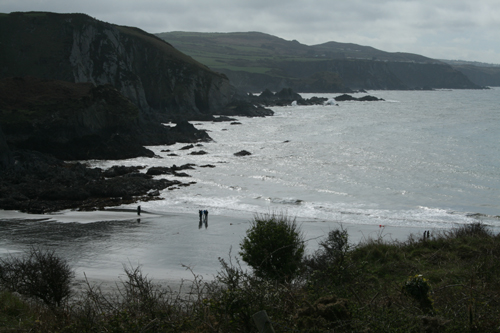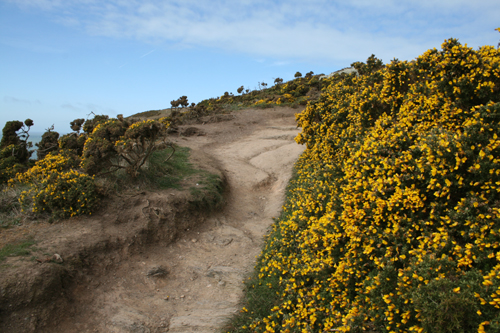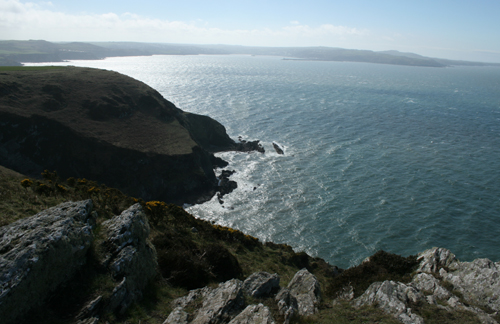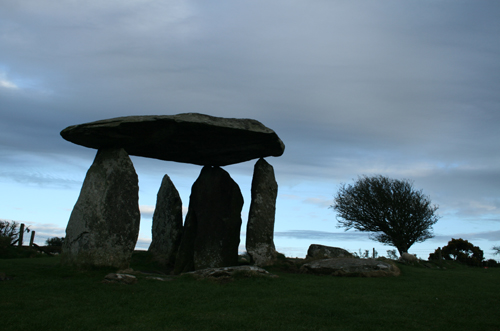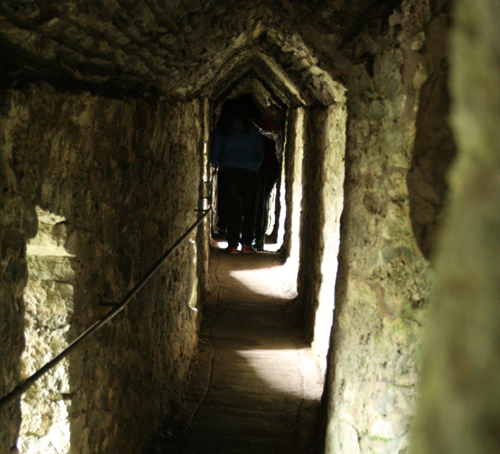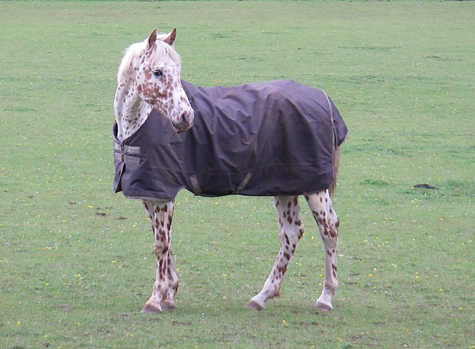The talented multilinguists among you will of course have spotted that the title of this blog entry is in Welsh, and a very useful phrase it’s proving to be at the moment too. Translation? “A spot of rain.”
As a field teacher constantly working outdoors, I often use the phrase “There’s no such thing as bad weather, only unsuitable clothing” as a way of getting students to dress less for fashion purposes and more for the vagaries of British seasons. However, even I have found myself musing in the past week that perhaps it would be nice if it rained more at night rather than the frequent torrential daily downpours we’ve been getting. I know that we desperately need water, but as I cycled to the train station in yet another ‘heavy shower’ I found myself yelling “Stop raining!” As I write this, rain is battering my windows yet again, and the forecast for early May is ‘largely unsettled’. Thank you, Met Office. I think I will go and buy a new pair of waterproof trousers.
Luckily, when I went to stay with a friend in south Wales in early April we had at least one day of perfect sunny weather. We took advantage of this to go walking around Dinas Head on the Pembrokeshire coast. This part of Wales is a National Park and popular with walkers, with a lot of steep ups and downs along cliff edges (vertigo sufferers beware). The glorious views across the bay to Fishguard and out across the Irish Sea are worth a little exertion… And a stiff onshore wind kept us from overheating on the uphill stretches.
I love the sea in any kind of weather, so this was pretty nearly a perfect day for me: a long walk outdoors, fabulous views, sunshine and a picnic on the beach at the coastal village of Cwm-Y-Eglwys at the halfway point. There was plenty of wildlife to get distracted by along the way as well: gorse and violets, wheeling gulls overhead and even a rocky outcrop garnished with what looked to be Guillemots (Uria aalge). As I was carrying my camera I hadn’t brought binoculars along as well, although a helpful lady (who turned out to be an RSPB member) assisted with identification. If you are good at birds and can make them out in the picture below, let me know if she got it right.
On the way home to my friend’s house in the wilds of Dyfed we stopped off for a visit to Pentre Ifan, a Neolithic stone tomb dating from 3,500 BC or thereabouts. The earth mound that would once have covered the 16-tonne capstone and uprights has gone, leaving the stones standing dramatically against the Pembrokeshire skyline. As it was late in the day we had the site to ourselves, which was probably the best way to view it. A suitably peaceful end to a windy but gorgeous day.
The following day dawned cloudy and wet, so we made the best of it with an expedition to Carreg Cennen, a ruined 13th century castle near Landeilo. Perched on a hilltop with what modern estate agents would probably call ‘commanding views of the surrounding countryside’, Carreg Cennen reminds me of all the castles I ever visited on school trips, when I used to clamber over ruined battlements and daydream heroically about swashbuckling exploits. As I recall, I was always an outlaw or daring raider, rather than any of the castle’s legitimate aristocratic inhabitants. Obviously watching too many episodes of The Flashing Blade had a lasting effect on me.
If you should go visiting Carreg Cennen yourself the most important bit of kit to take with you is a torch, because in the limestone underneath the castle is a long narrow cave that visitors can explore. In these modern days of health and safety obsessiveness it was heartening to be able to scramble down the steep narrow entrance passage, treacherously slippery steps and claustrophobic pothole unhampered by any kind of fussy warning notices. I for one thoroughly enjoyed banging my head on the low stone ceiling. Good old-fashioned British fun.
Since school term has started again after the Easter holidays my field teaching work is back in full swing at Rushall Farm and for the RSPB at Thatcham Nature Discovery Centre; but I also had an interesting photography job in mid-April, covering the opening of BBOWT’s new environmental education centre at Woolley Firs near Maidenhead. When I worked as a countryside ranger in Maidenhead a few years ago I met Woolley Firs Conservation Trust founder Rosa Lee, who was passionate about her vision to turn the site into an education centre for young people. So it was wonderful to see her dream finally realised, as a result of many years of hard work by herself, other trustees, corporate sponsors and of course BBOWT volunteers and staff.
After spending a hectic afternoon photographing VIPs and children from St Luke’s Primary School I had a chance to admire the site and all the latest interactive IT gadgetry that BBOWT education officer Lyn will be using when teaching. You can probably tell from my photos on the BBOWT website that the centre will be very popular with local schools, and I’m looking forward to popping in again soon for a visit to watch Lyn in action.
As the weather continues to be on the doleful and damp side, I’m snatching the opportunity to get and about whenever there’s a break in the clouds. Last weekend I managed to meet up with another friend for good long ramble from Pangbourne along the Thames towards Mapledurham. The photo above is of a scarecrow en route that has been steadily evolving over the several years we’ve been doing this walk.
On the slopes around Mapledurham there are fine examples of Chiltern beechwoods, and bluebells were just starting to come into full flower. Wafts of bluebell scent drifted towards us as we walked along: even with the occasional inevitable (you guessed it) heavy shower of rain, it felt good to be out enjoying the English spring. I am particularly fond of blue flowers and there’s something almost hypnotic about the indigo-blue of bluebells when they are blooming en masse. That intense blue haze striped with light and shadow is a particularly British woodland experience, one we should value highly. That our native bluebells Hyacinthoides non-scripta are threatened by climate change, habitat loss and accidental cross-breeding with the non-native Spanish bluebell Hyacinthoides hispanica is something that all of us should be concerned about. If you’re a gardener, I urge you to avoid planting Spanish bluebells if at all possible. It’s not always easy to find British-grown native bluebell bulbs or seed, but it is possible.
Our walk homewards led us back along the Thames valley to Pangbourne (resisting the urge to visit Mapledurham watermill, as the entrance fee was so steep it roused our righteous ire). One of the less usual sights of the Chilterns that we passed on our return journey was field after field of peacefully grazing alpacas. I failed to get a photo of one, although I did take a picture of a pleasingly spotty horse in a neighbouring field. I believe the technical term for this breed is appaloosa. I have long left behind my (exceedingly brief) horse riding days, but a childhood fascination with cowboys will never leave me and I feel sure that if I ever did get an opportunity to ride the range, an appaloosa horse would be just the ticket. With me wearing a black stetson, naturally. If it happens, rest assured you will read about it here.

